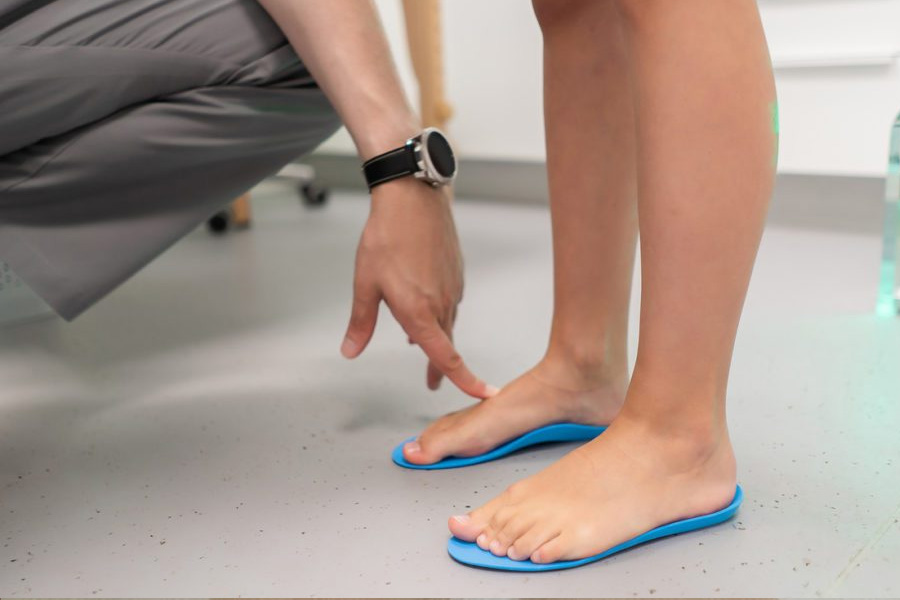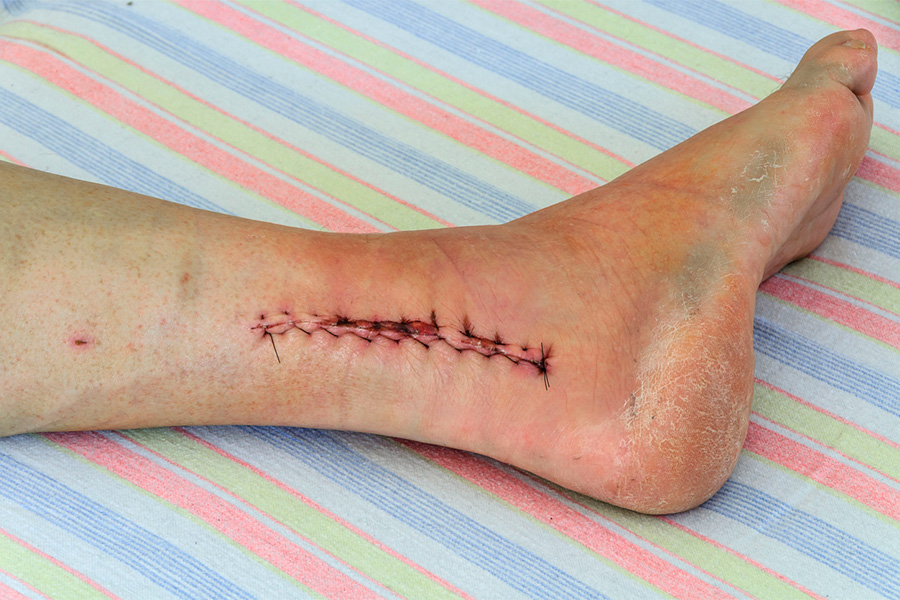According to the childhood song, “Dem Bones,” the toe bone is connected to the heel bone. That might be a fine primer for a first grader, but in fact, the anatomy of the foot is incredibly complex. And when the heel is in pain, it can impact nearly everything you do, as well as the bones that rely on the heel for stability and balance. Here are some of the primary causes of heel pain to keep an eye out for.
Plantar Fasciitis
Plantar Fasciitis is caused by irritation or injury to the plantar fascia, a tough piece of connective tissue that runs from the heel bone to the toes of the foot. Jogging, prolonged periods of standing, ill-fitted shoes, obesity, and just a few of the causes that can trigger this painful condition. A key symptom is that the pain often is most acute after long periods of inactivity – especially sleeping. With plantar fasciitis, the first step out of bed in the morning can often be the most painful of the day.
Achilles Tendonitis
One little tendon brought down the mighty Achilles. This tendon is formed from the fibers that connect the calf muscles that insert into the rear of the calcaneus. Achilles Tendonitis is considered an overuse-type wear and tear injury that is very common in athletes who run and jump frequently, as well as dancers and those whose occupations mandate a lot of movement.
Bursitis
Bursae are fluid-filled sacs that serve as protection and cushioning for your joints. There are two bursae located in the heel – the retrocalcaneal bursa, which lies between the calcaneus and the Achilles tendon; and the retroachilles bursa, which is located between the Achilles tendon and the skin. When these structures are irritated and inflamed they can hurt, badly. Bursitis in the heel typically is caused by overuse or ill-fitting shoes; it can also be exacerbated by arthritis as well as gout, or a congenital deformity.
Nerve Disorders
The most common nerve condition that causes heel pain is tarsal tunnel syndrome. The posterior tibial nerve travels down the leg, branching off many times before reaching the foot. The foot’s tarsal tunnel is made up of a bone called the tallus and a band of fibrous tissue. Damage to this space of the tarsal tunnel can be a source of pain and constant problems until it is addressed, similar to freeing the carpal nerve of the wrist.
“Stone Bruises”
A “stone-bruise” occurs when a person steps, jumps, or otherwise comes down hard on their heel against a flat piece of rock or other hard surfaces, bruising the heel and making any sort of movement painful.
Infection
Infections of the foot are called osteomyelitis and are more common amongst patients who have diabetes or peripheral vascular disease. Infections in the heel and foot can cause red, open wounds; oftentimes diabetics are unaware of the infection because of nerve damage that prevents pain sensors from activating.
Systemic diseases
While certain conditions are not isolated to the heel, they can profoundly influence heel pain. Conditions like rheumatoid arthritis can affect every joint – especially those that are used all the time like heels. Gout, which most often causes inflammation in the big toe, can affect the heel as well.
Treating Painful Foot and Ankle Conditions in Cincinnati
If you are suffering heel pain or have any other concerns of the foot or ankle, contact the professionals at Cincinnati Foot and Ankle Care. Call the location of the closest facility, there are 18 conveniently located in and around greater Cincinnati. Or request an appointment online and take a step, heel first, free from pain!





